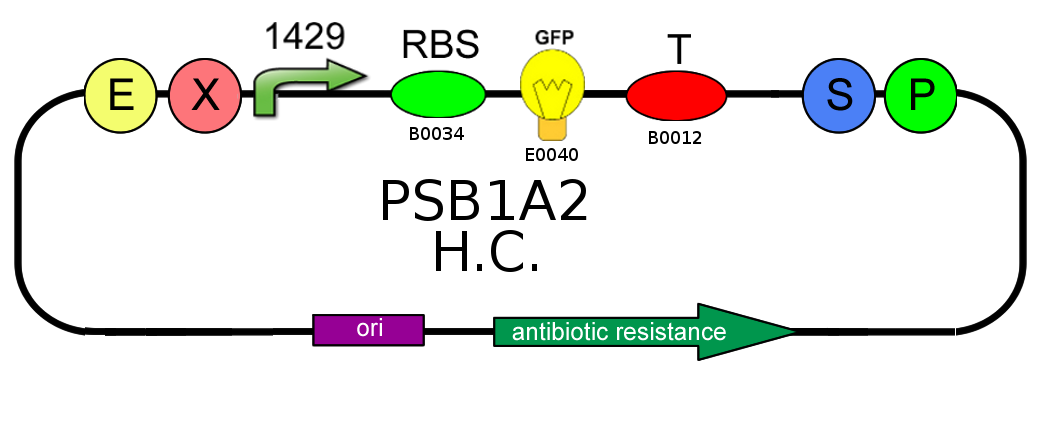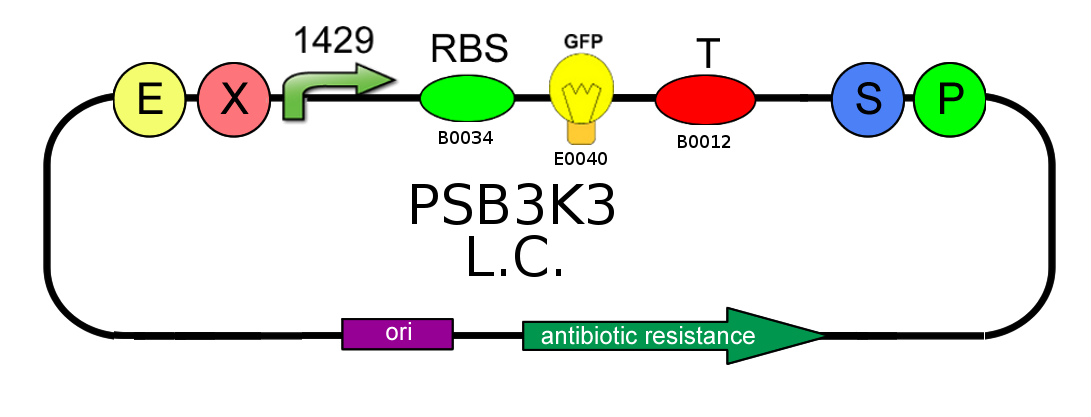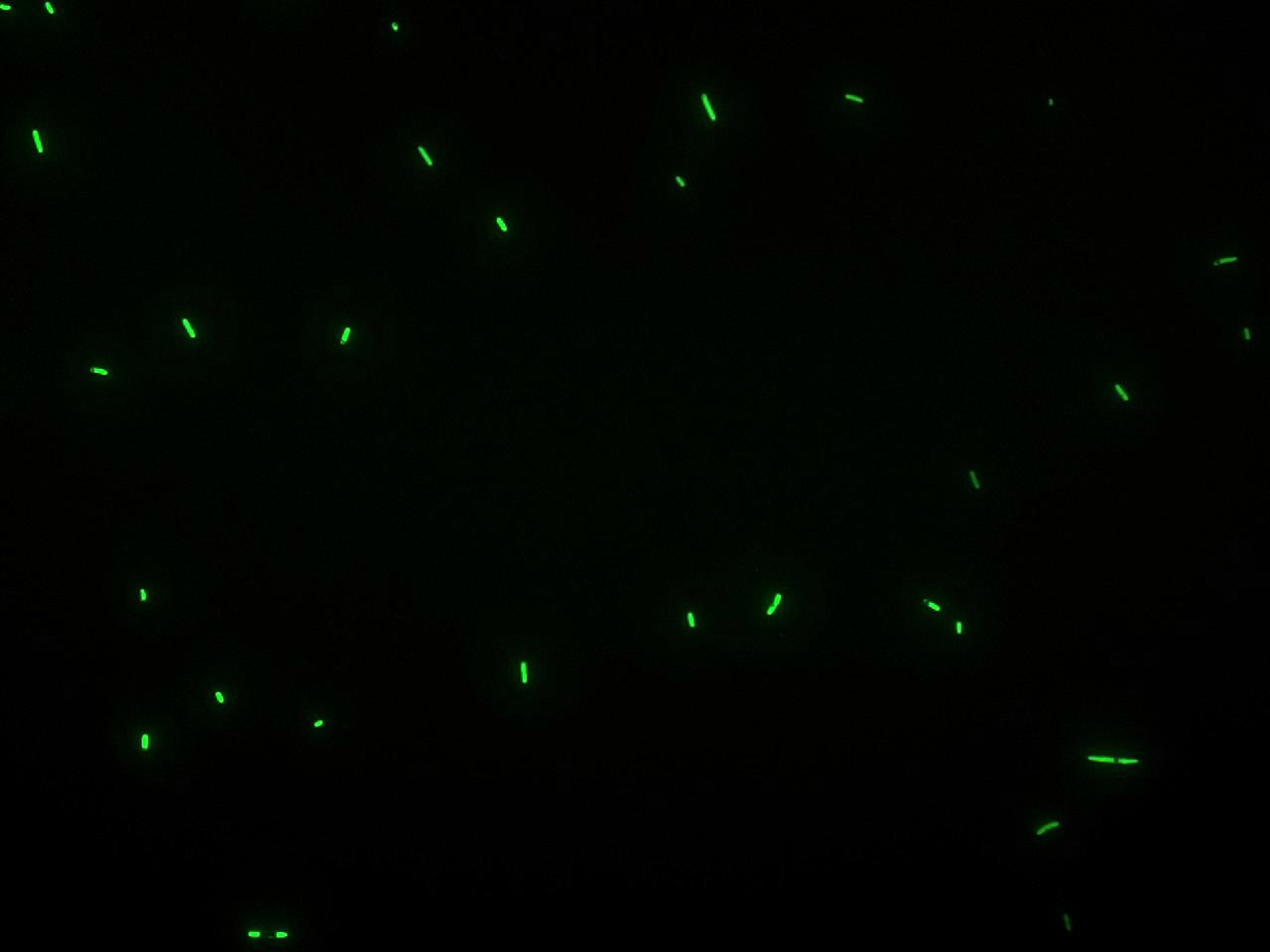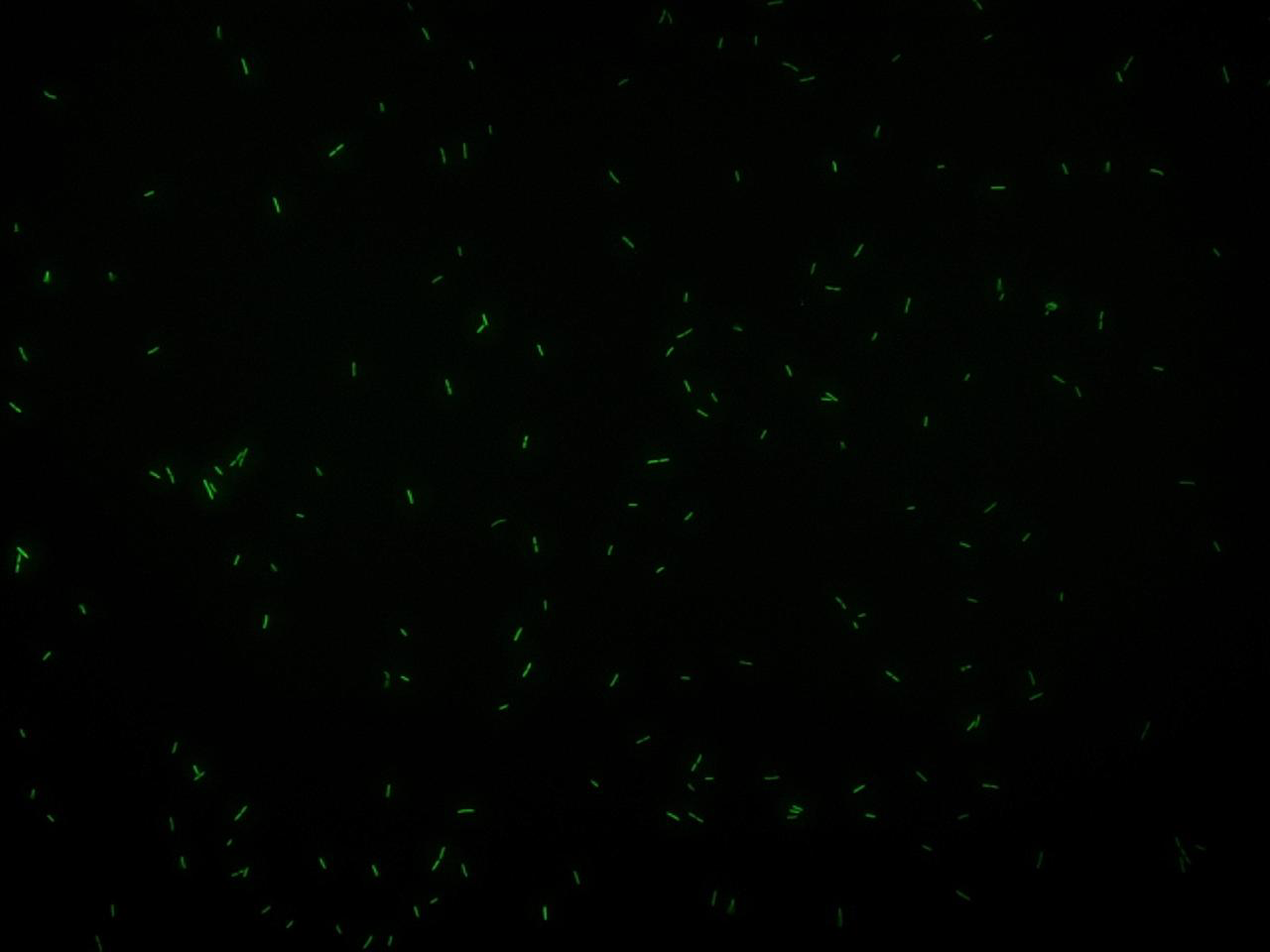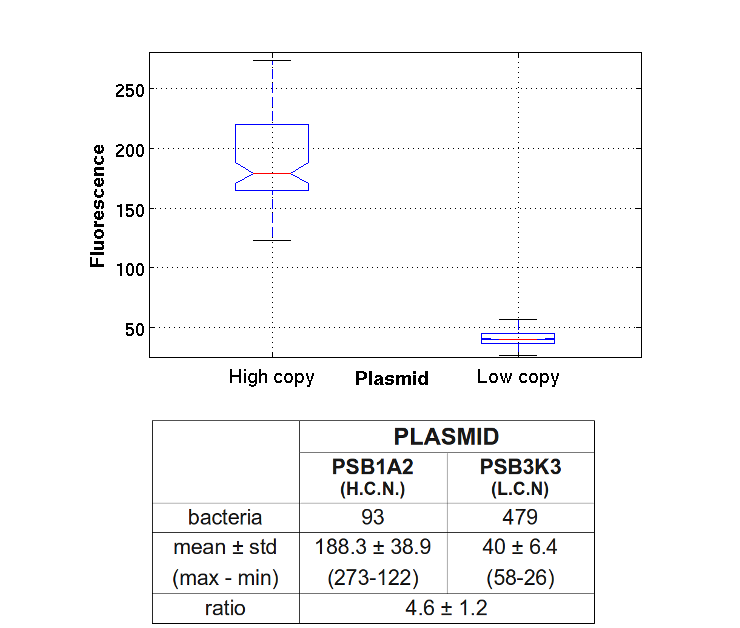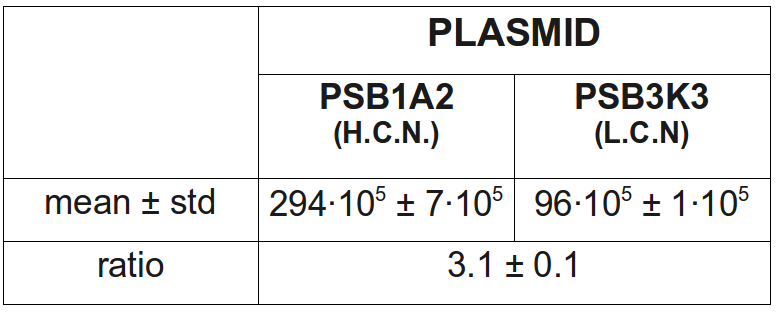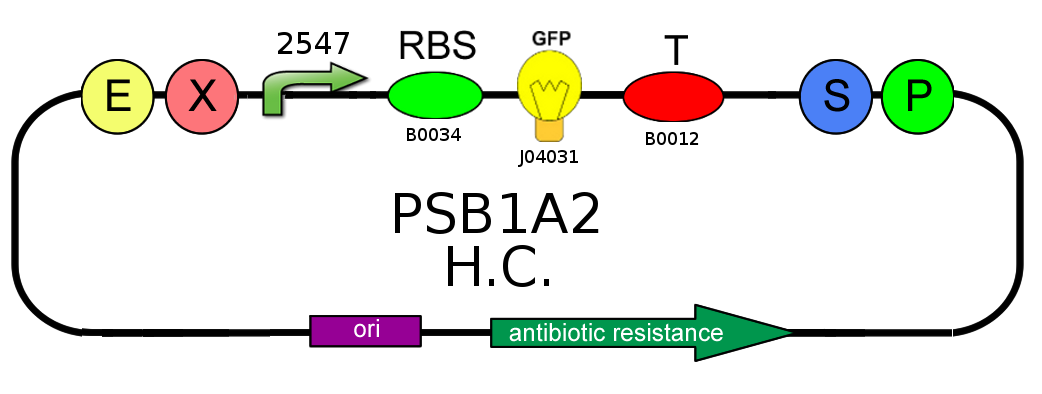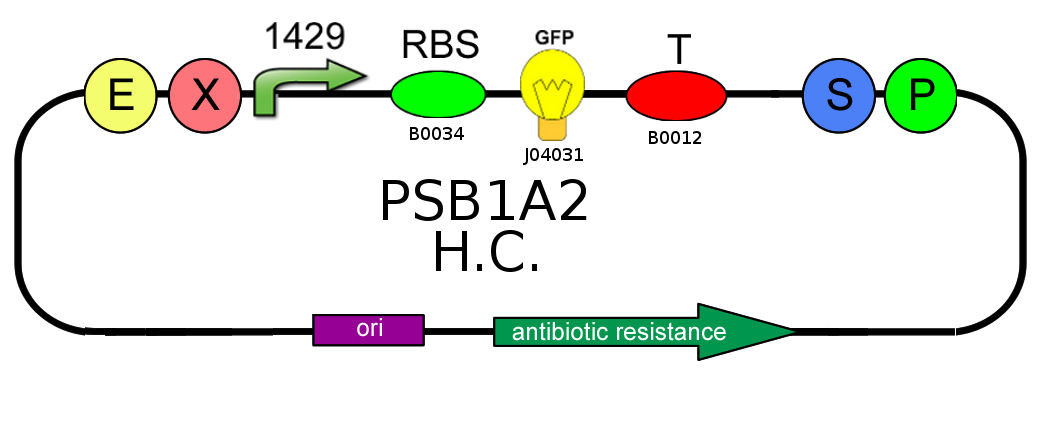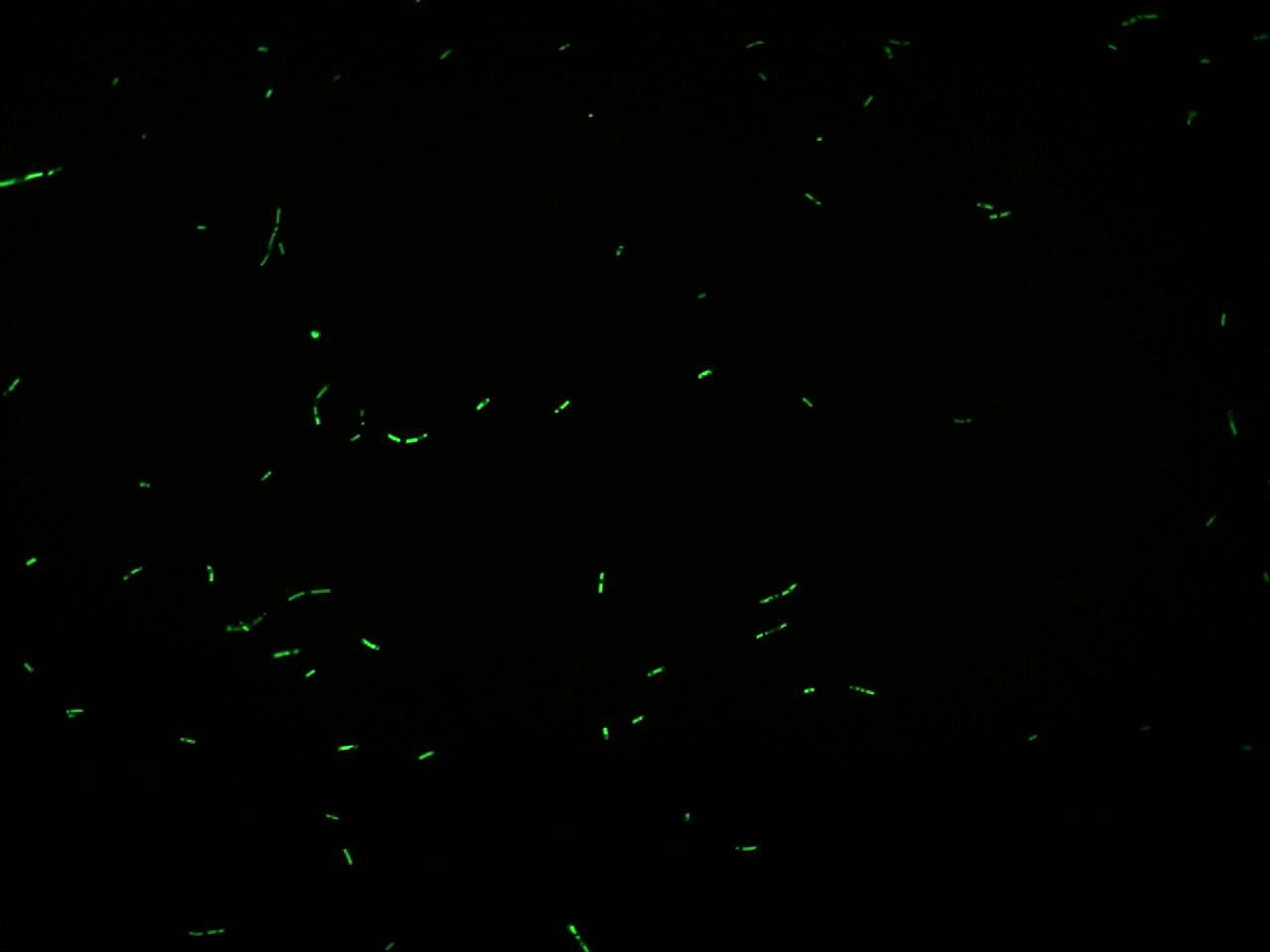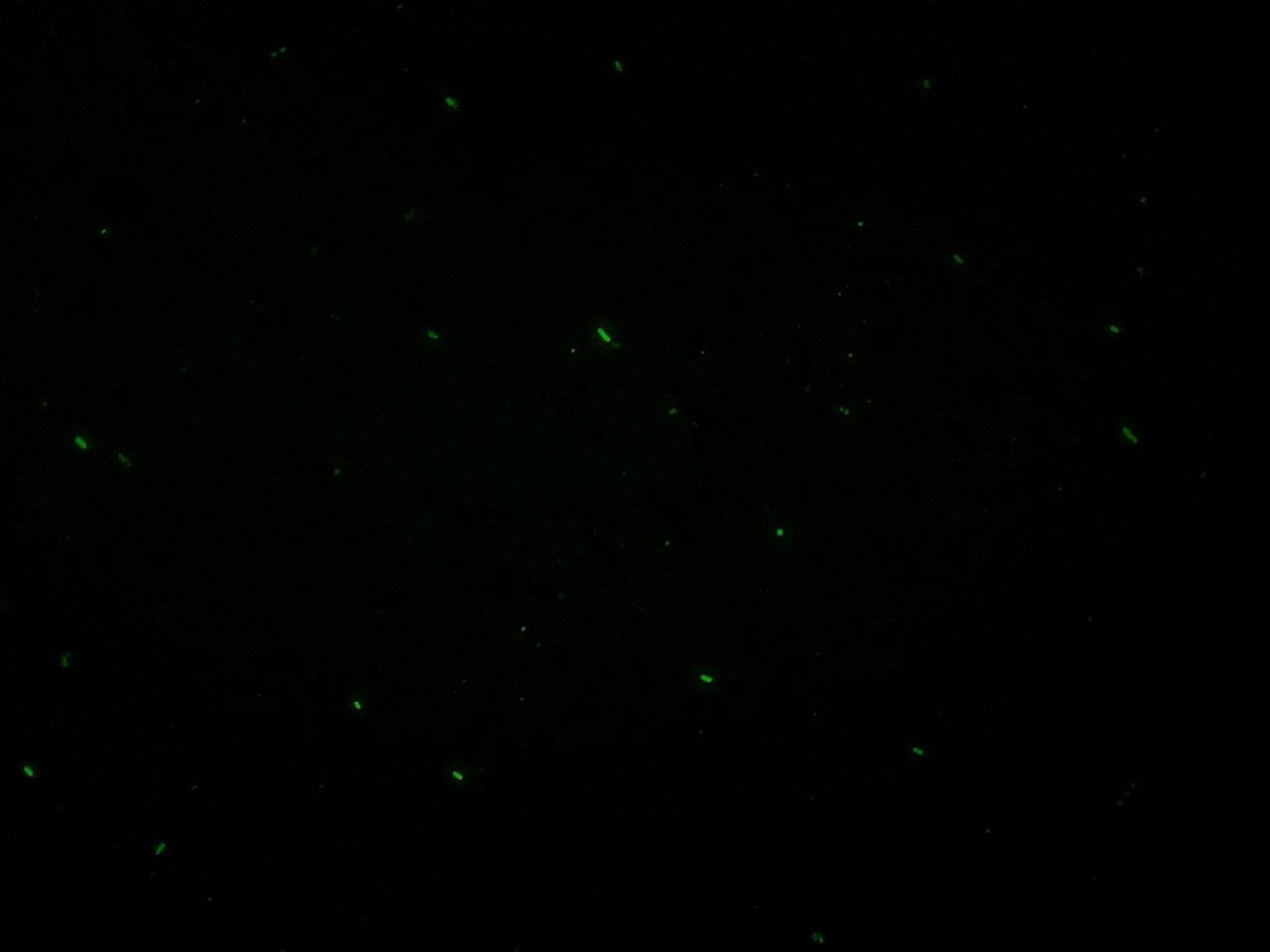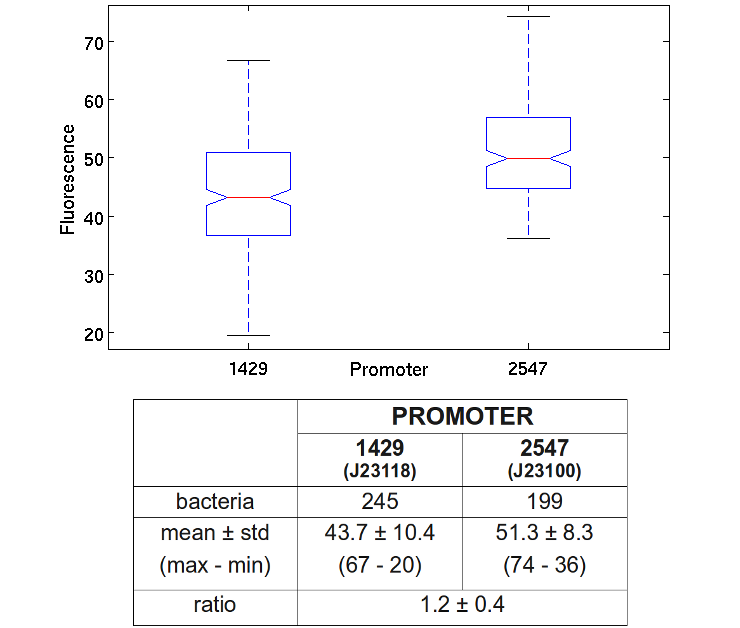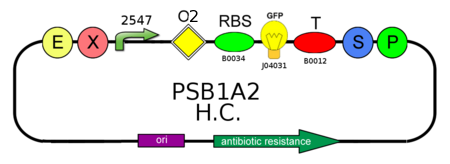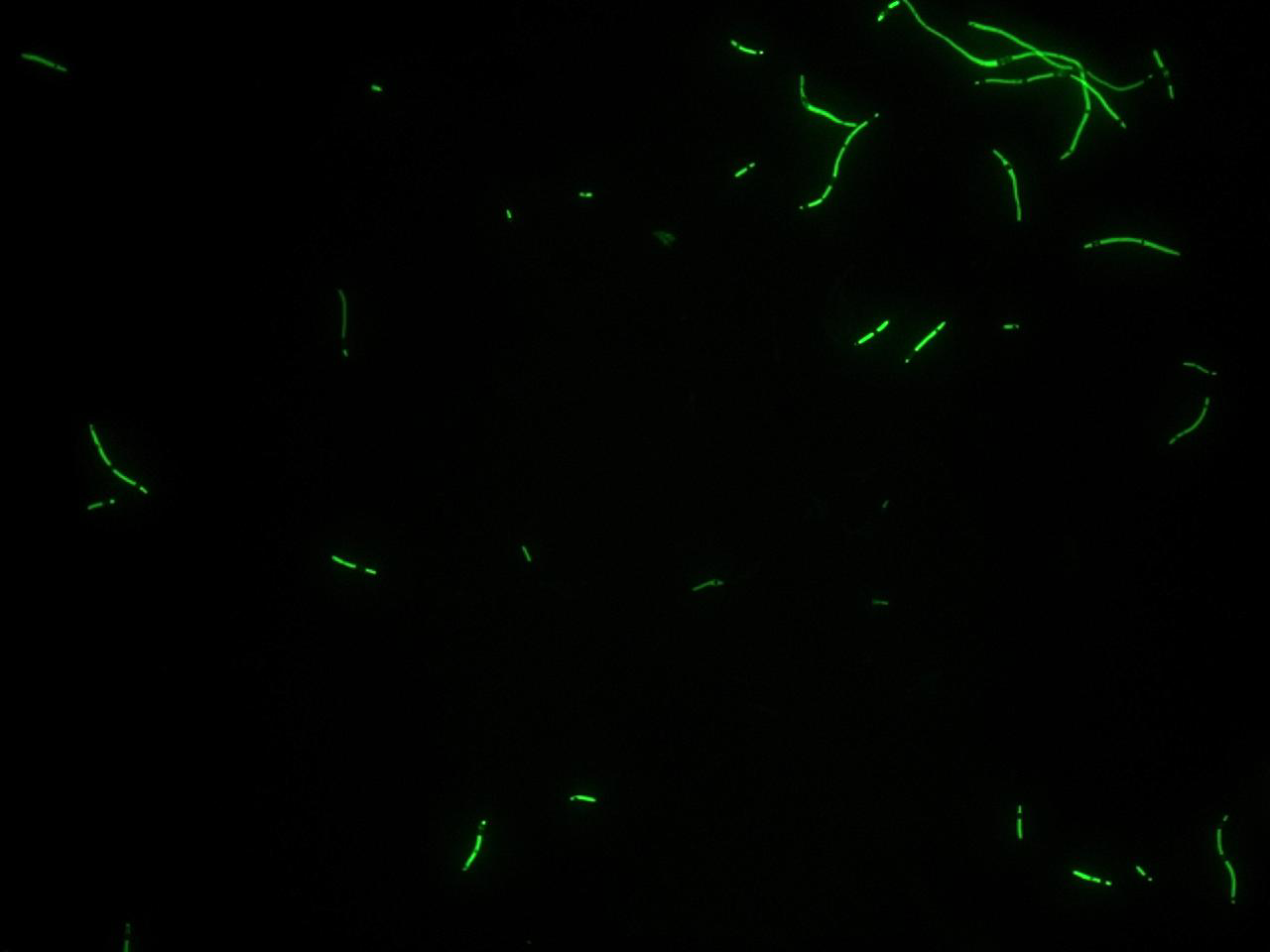Team:Bologna/Characterization
From 2009.igem.org
(→Promoter characterization) |
|||
| Line 1: | Line 1: | ||
{{Template:BolognaTemplate}} | {{Template:BolognaTemplate}} | ||
| - | |||
| - | |||
| - | |||
| - | |||
<br><br> | <br><br> | ||
| - | [[Image: | + | =<font size="5" color="#000000"><b>Testing Circuit</b>= |
| + | <br><br> | ||
| + | <font size="4" color="#000000"> | ||
| + | In order to test our T-REX device, we developed the following genetic circuit (Fig. 1): | ||
| + | </html> | ||
| + | <br><br> | ||
| + | [[Image:circuit2OK.jpg|center|900px|thumb|<center>Figure 1 - Genetic Circuit to test CIS and TRANS' mRNA functionality</center>]] | ||
| + | <font size="4">Before realizing the whole Testing Circuit, we decided to characterize its constitutive parts with intermediate circuits. </font> | ||
<br> | <br> | ||
| - | + | <br> | |
| + | =<font size="5" color="#000000"><b><i>pSB1A2</i> vs <i>pSB3K3</i></b>= | ||
<br><br> | <br><br> | ||
| - | + | <font size="4" color="#000000"> | |
| - | < | + | * In order to identify the ratio between the high copy number the low to medium copy number plasmids, we analyzed the BBa_K201003 GFP production both on pSB1A2 and pSB3K3 (Fig. 4): |
| + | |||
| + | ''To test the ratio between the production of a high copy number plasmid (pSB1A2) and a low copy number one (pSB3K3), we assembled two circuits. The open loop GFP circuits are realized with a BBa_J23118 promoter and the standard biobrick I13504. From the Registry of Standard Biological Parts we knew that pSB1A2 is a high copy number plasmid while pSB3K3 is a low copy one, so the theoretical ratio between their copy number should be at least 10, but the highest value that we reached with the spectrofluorimeter was about 3,3.'' | ||
| + | |||
<br> | <br> | ||
| - | |||
| - | |||
| - | |||
| - | |||
{|align="center" | {|align="center" | ||
| - | |[[Image:1429GFP_openloop_hc.png|center|450 px]] | + | |[[Image:1429GFP_openloop_hc.png|center|450 px|thumb|<center><font face="Calibri" font size="4">Figure 4a - BBa_K201003 on pSB1A2</font></center>]] |
| - | |[[Image:1429GFP_openloop_lc.png|center|450 px]] | + | |[[Image:1429GFP_openloop_lc.png|center|450 px|thumb|<center><font face="Calibri" font size="4">Figure 4b - BBa_K201003 on pSB3K3</font></center>]] |
|} | |} | ||
| - | |||
PSB1A2 with a high copy number plasmid and a low copy number were transformed in DH5alfa bacterial cells according to the standard protocol. | PSB1A2 with a high copy number plasmid and a low copy number were transformed in DH5alfa bacterial cells according to the standard protocol. | ||
<br> | <br> | ||
| Line 31: | Line 33: | ||
|[[Image:1429i13504psb3k3y100cgn170esp1,4_v1.png|center|thumbnail|385 px|Low copy number plasmid (PSB3K3)]] | |[[Image:1429i13504psb3k3y100cgn170esp1,4_v1.png|center|thumbnail|385 px|Low copy number plasmid (PSB3K3)]] | ||
|} | |} | ||
| - | |||
[[Image:boxplot_plas.png|center|thumbnail|700px|Box Plot of bacterium fluorescence. Max and minimum values are indicated by the horizontal bars.]] | [[Image:boxplot_plas.png|center|thumbnail|700px|Box Plot of bacterium fluorescence. Max and minimum values are indicated by the horizontal bars.]] | ||
| + | [[Image:plasmidiGrafico2.png|center|thumbnail|700px]] | ||
<br> | <br> | ||
| + | |||
| + | =<font face="Calibri" font size="5" color="#000000"><b><i>BBa_J23100</i> vs <i>BBa_J23118</i></b>= | ||
<br><br> | <br><br> | ||
| - | + | <font face="Calibri" font size="4" color="#000000"> | |
| - | + | * In order to identify the ratio between BBa_J23100 and BBa_J23118 promoters, we analyzed the BBa_K079031 and BBa_K079032 GFP production on pSB1A2: | |
| - | + | ||
| - | <font size=" | + | |
| - | In order to | + | |
| - | + | ||
<br> | <br> | ||
{|align="center" | {|align="center" | ||
| - | |[[Image:2547GFP_open_tag.png|center|450 px]] | + | |[[Image:2547GFP_open_tag.png|center|450 px|thumb|<center><font face="Calibri" font size="4">Figure 5a - BBa_K079032 on pSB1A2</font></center>]] |
| - | |[[Image:1429GFP_openloop_hc_tag.png|center|450 px]] | + | |[[Image:1429GFP_openloop_hc_tag.png|center|450 px|thumb|<center><font face="Calibri" font size="4">Figure 5b - BBa_K079031 on pSB1A2</font></center>]] |
|} | |} | ||
| + | <br> | ||
| + | <br> | ||
To do this we transformed those constructs in bacterial cells; we picked up a colony from each plate and we inoculated it in M9 medium. After growing all night at 37°C we took a milliliter of each sample and we measured their optical density; than we prepared slides for the fluorescence bacteria images acquisition, following the same steps of the previous test. | To do this we transformed those constructs in bacterial cells; we picked up a colony from each plate and we inoculated it in M9 medium. After growing all night at 37°C we took a milliliter of each sample and we measured their optical density; than we prepared slides for the fluorescence bacteria images acquisition, following the same steps of the previous test. | ||
The images, acquired during some repetitions of the test, was elaborated with the fluorescence visualization software (VIFluoR) giving out those results: | The images, acquired during some repetitions of the test, was elaborated with the fluorescence visualization software (VIFluoR) giving out those results: | ||
| + | </font> | ||
| + | <font size="3"> | ||
| + | From the registry of standard parts we learnt that the strengths of J23100 and J23118 are respectively 2547 and 1429, so the ratio between them is about 1.78. Experimentally we have achieved the value of 1.2; for this reason we can say that this prove has gone well. | ||
| + | <br><br> | ||
</font> | </font> | ||
{|align="center" | {|align="center" | ||
| Line 54: | Line 60: | ||
|} | |} | ||
[[Image:boxplot.png|center|thumbnail|600px|Box Plot of bacterium fluorescence. Max and minimum values are indicated by the horizontal bars.]] | [[Image:boxplot.png|center|thumbnail|600px|Box Plot of bacterium fluorescence. Max and minimum values are indicated by the horizontal bars.]] | ||
| + | [[Image:tabellaPromotoriGrafico2.png|center|thumbnail|600px]] | ||
| + | |||
<br> | <br> | ||
| - | <font size=" | + | <br> |
| - | + | =<font face="Calibri" font size="5" color="#000000"><b><i>Presence</i> vs <i>Absence</i> of LacI O2 natural operator</b>= | |
<br><br> | <br><br> | ||
| - | < | + | <font face="Calibri" font size="4" color="#000000"> |
| - | + | * We needed to confirm that LacI natural operator O2 don't influence GFP production when LacI repressor is not present. We compare then the GFP expression level of BBa_K079032 and BBa_K201001 | |
| - | = | + | |
| - | + | ||
| - | + | ||
| - | + | ||
<br> | <br> | ||
| - | |||
| - | |||
{|align="center" | {|align="center" | ||
| - | |[[Image:2547GFP_open_tag.png|center|450 px]] | + | |[[Image:2547GFP_open_tag.png|center|450 px|thumb|<center><font face="Calibri" font size="4">Figure 6a - BBa_K079032 on pSB1A2</font></center>]] |
| - | |[[Image:2547GFPO2_open_tag.png|center|450 px]] | + | |[[Image:2547GFPO2_open_tag.png|center|450 px|thumb|<center><font face="Calibri" font size="4">Figure 6b - BBa_K201001 on pSB1A2</font></center>]] |
|} | |} | ||
| + | <br> | ||
Following the steps of the previous tests we obtained those results: | Following the steps of the previous tests we obtained those results: | ||
<br> | <br> | ||
Revision as of 01:49, 22 October 2009
| HOME | TEAM | PROJECT | SOFTWARE | MODELING | WET LAB | PARTS | HUMAN PRACTICE | JUDGING CRITERIA |
|---|
Contents |
Testing Circuit
In order to test our T-REX device, we developed the following genetic circuit (Fig. 1):
</html>
Before realizing the whole Testing Circuit, we decided to characterize its constitutive parts with intermediate circuits.
pSB1A2 vs pSB3K3
- In order to identify the ratio between the high copy number the low to medium copy number plasmids, we analyzed the BBa_K201003 GFP production both on pSB1A2 and pSB3K3 (Fig. 4):
To test the ratio between the production of a high copy number plasmid (pSB1A2) and a low copy number one (pSB3K3), we assembled two circuits. The open loop GFP circuits are realized with a BBa_J23118 promoter and the standard biobrick I13504. From the Registry of Standard Biological Parts we knew that pSB1A2 is a high copy number plasmid while pSB3K3 is a low copy one, so the theoretical ratio between their copy number should be at least 10, but the highest value that we reached with the spectrofluorimeter was about 3,3.
PSB1A2 with a high copy number plasmid and a low copy number were transformed in DH5alfa bacterial cells according to the standard protocol.
One colony from each plate was picked up and let grow overnight in M9 medium at 37°C. One milliliter for each of the two samples was collected by O/N cultures and spinned at 8000 rpm for a minute; another milliliter was used for measuring the optical density and estimate the growth of the sample. The supernatant was harvested and the pellet resuspended. Slides were prepared for the acquisition of images of fluorescent bacteria.
Finally, images were elaborated with the fluorescence visualization software and these are the results:
BBa_J23100 vs BBa_J23118
- In order to identify the ratio between BBa_J23100 and BBa_J23118 promoters, we analyzed the BBa_K079031 and BBa_K079032 GFP production on pSB1A2:
To do this we transformed those constructs in bacterial cells; we picked up a colony from each plate and we inoculated it in M9 medium. After growing all night at 37°C we took a milliliter of each sample and we measured their optical density; than we prepared slides for the fluorescence bacteria images acquisition, following the same steps of the previous test.
The images, acquired during some repetitions of the test, was elaborated with the fluorescence visualization software (VIFluoR) giving out those results:
From the registry of standard parts we learnt that the strengths of J23100 and J23118 are respectively 2547 and 1429, so the ratio between them is about 1.78. Experimentally we have achieved the value of 1.2; for this reason we can say that this prove has gone well.
Presence vs Absence of LacI O2 natural operator
- We needed to confirm that LacI natural operator O2 don't influence GFP production when LacI repressor is not present. We compare then the GFP expression level of BBa_K079032 and BBa_K201001
Following the steps of the previous tests we obtained those results:
 "
"


